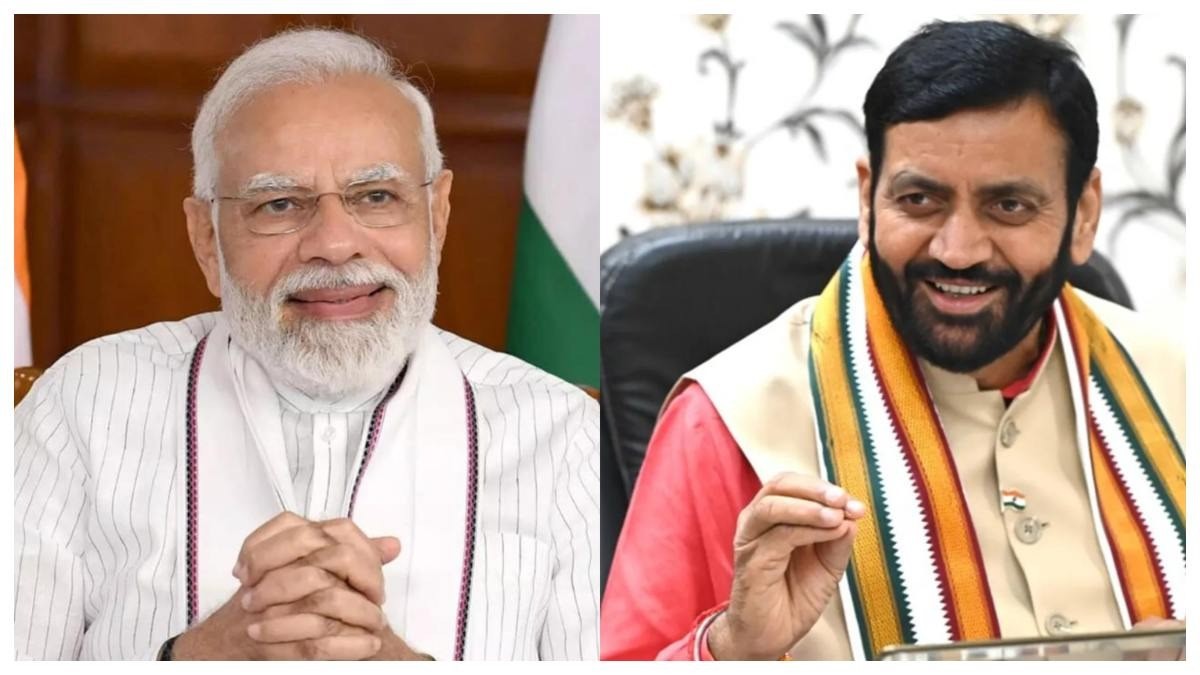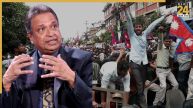The Narendra Modi-powered Bharatiya Janata Party (BJP) has created a record of sorts – becoming the first-ever political party to secure a third consecutive term in Haryana since Independence. While achieving a feat that no party had accomplished since Independence, the saffron party has defied the exit poll predictions of a crushing defeat in Haryana.
This unprecedented BJP victory is significant for the state and the broader national political landscape as it sets the stage for the 2029 Lok Sabha elections. BJP’s impressive show in Haryana, despite predictions of an anti-incumbency wave, demonstrates its strategic agility, ground-level mobilisation, and the enduring appeal of ‘Brand Modi’. On the other hand, Congress, which was keeping a high hope for a comeback after a decade, was found grappling with internal divisions and missed opportunities.
Ahead of the counting of votes, a majority of exit polls had predicted a tight contest, with many giving an upper hand to Congress over the ruling BJP. The Congress looked set for a strong showing, especially after the BJP’s less-than-stellar performance in the 2024 Lok Sabha elections, where it fell short of an outright majority. As expected, exit polls predicted a possible Congress sweep, suggesting it would secure anywhere between 48 and 55 seats in the 90-member Haryana Assembly. However, as the counting progressed, it became evident that the BJP had once again outperformed expectations, securing a clear majority and making history by securing its third consecutive term.
As the last results came by the evening, the BJP had clinched 48 seats, while Congress had bagged nearly 37 seats. This stark contrast between expectations and the ground reality highlights the BJP’s ability to turn the tide, even in the face of daunting odds.
Congress’ defeat in Haryana can largely be attributed to internal strife and a narrowly focused electoral strategy. Bhupinder Singh Hooda, the party’s key leader, concentrated heavily on consolidating the Jat vote, which constitutes approximately 28% of Haryana’s electorate. While this may have seemed a strong move, it alienated the non-Jat voters, who make up the remaining 72%. By focusing too much on the Jat community, Congress possibly failed to reach out to a broader voter base.
Making things worse, internal discord plagued Congress throughout the assembly poll campaign. Two powerful factions led by senior leaders such as Kumari Selja and Bhupinder Singh Hooda created divisions within the party. This infighting left Congress unable to present a united front, leading to a lacklustre ground campaign.
Moreover, Congress relied heavily on Hooda’s leadership, betting on his political legacy and failing to introduce fresh faces or new ideas. This over-reliance on a single leader and the party’s failure to connect with younger voters or address the concerns of the non-Jat communities cost Congress dearly. However, Hooda proved his detractors wrong by winning the assembly election from the Garhi-Sampla Kiloi seat with the biggest margin.
BJP’s historic win in Haryana can be traced back to its strategic focus on non-Jat voters and grassroots mobilisation. While Congress worked to secure the Jat vote, the BJP effectively consolidated support among the non-Jat communities, including the OBCs, Dalits, and other backward classes. Also, the party’s decision to replace former Chief Minister Manohar Lal Khattar with Nayab Singh Saini, an OBC leader, just a year ahead of the assembly elections proved to be a masterstroke. Saini’s leadership broadened the party’s appeal, particularly among the OBC and non-Jat populations.
BJP’s Haryana assembly election campaign focused on development, governance, and stability. The saffron party focused on specific regions, particularly the industrial belt and the Ahirwal area, securing critical wins in these areas. Additionally, the BJP’s strategic use of local leadership, like Rao Inderjit Singh in the Ahirwal region, helped consolidate its vote bank. This contrasted sharply with Congress’ overreliance on the Jat vote.
Another critical factor was the BJP’s disciplined campaign machinery. The party remained focused on addressing local issues and connecting with voters at the grassroots level. It also capitalized on Congress’ disarray without making loud promises, executing a well-planned and low-key campaign that delivered results.
Importantly, extensive protests by farmers against three controversial farm laws – repealed later by the Centre – and wrestlers’ agitation against the former WFI chief Brijbhushan Sharan Singh failed to make any impact on the outcome of the Haryana Assembly elections.
The results of assembly elections in Haryana will have significant implications for both the BJP and Congress as they prepare for the 2029 Lok Sabha elections. For the BJP, the victory in Haryana reinforces that the ‘Brand Modi is intact.’ Despite some setbacks for the BJP in the 2024 general elections, PM Narendra Modi remains popular, particularly in states like Haryana, where he continues to fascinate the electorate with his charisma and excellent oratory. The BJP’s ability to keep its house in order, consolidate non-Jat votes, and maintain a clear focus on governance has given it a strong foundation to build on as it heads towards 2029.
For Congress, the defeat in Haryana raises serious concerns about its ability to mount a credible challenge in the upcoming national elections. Congress has struggled with internal divisions and leadership issues, which have severely weakened its electoral prospects. If it continues to rely on outdated political lines of thinking and fails to address internal discord, it may face even greater challenges in the next general elections.
The BJP’s triumph in Haryana, coming against the backdrop of unfavourable exit polls, sends a strong message about the party’s robust electoral strategy. It also sets the stage for key upcoming elections, including those in Maharashtra and Delhi, which could further shape the national political landscape.
For Congress, the defeat serves as a wake-up call. If it hopes to challenge the BJP in 2029, it must resolve internal conflicts, broaden its appeal beyond traditional vote banks, and present a united front. The battle for 2029 has already begun, and Haryana’s results are an early indicator of the challenges and opportunities ahead for both parties.












